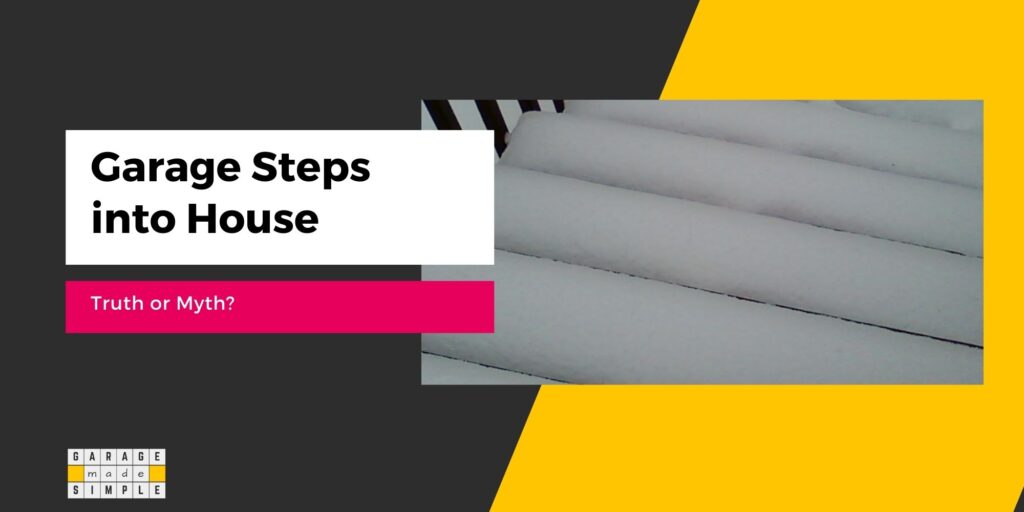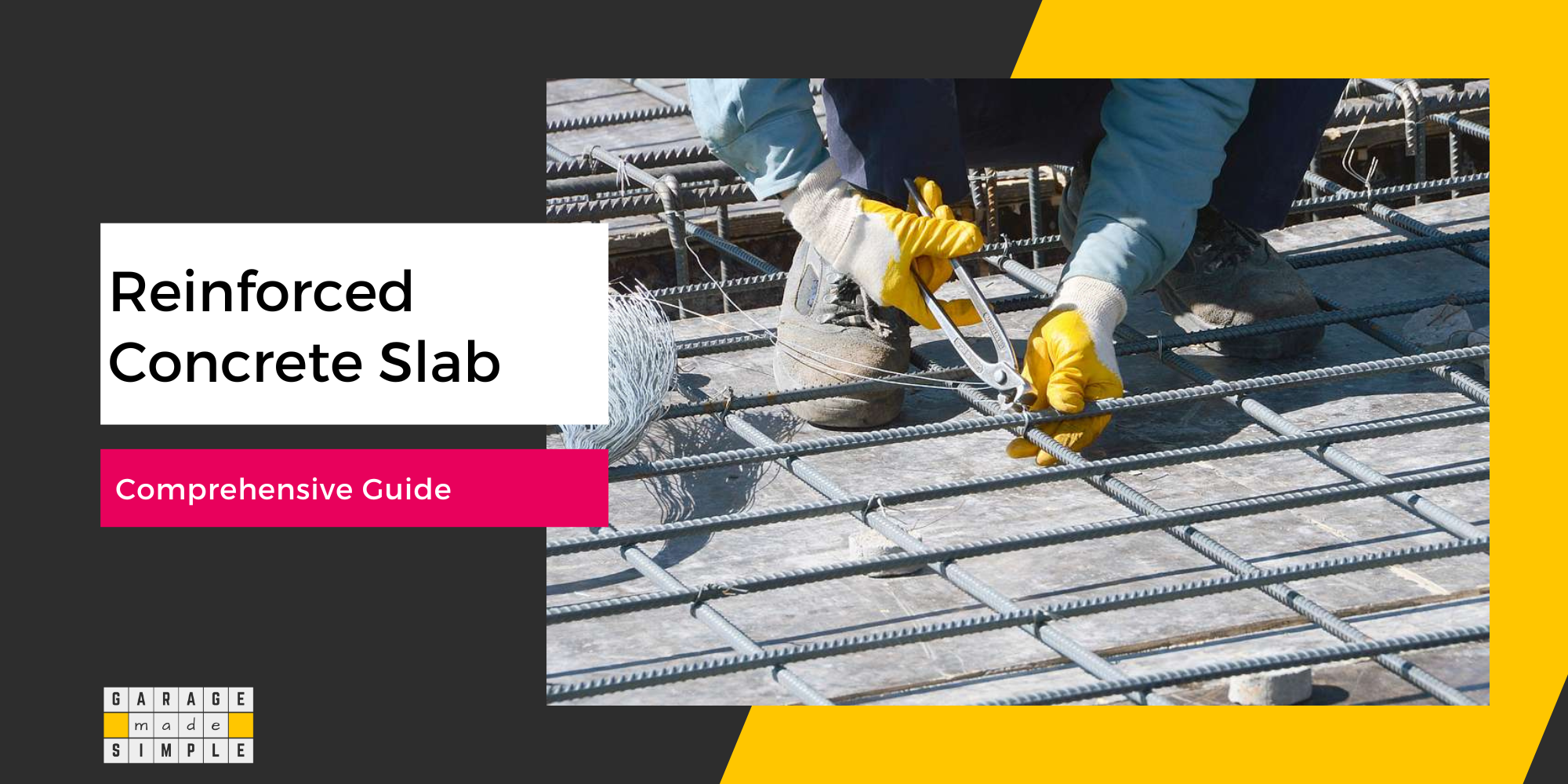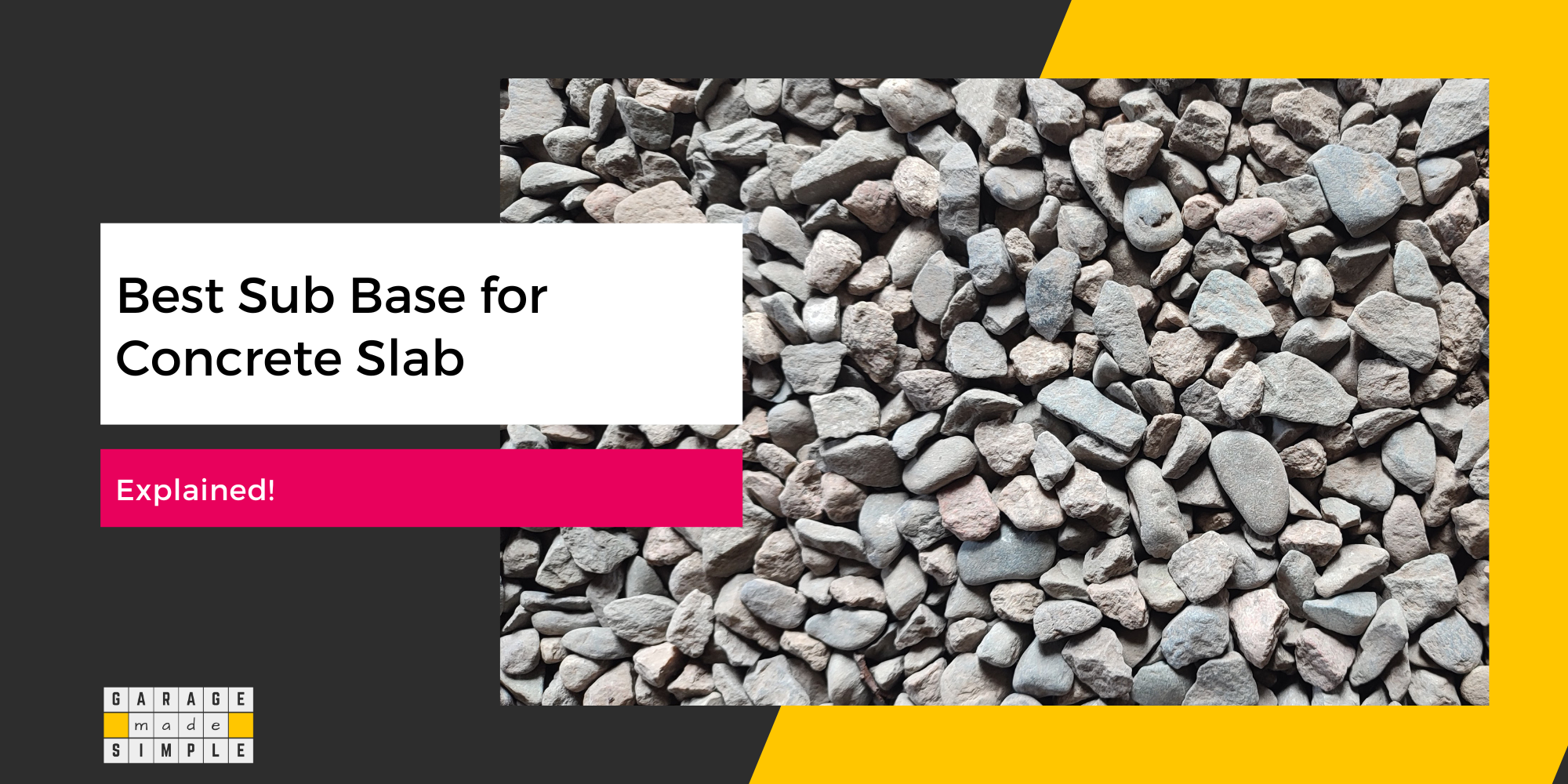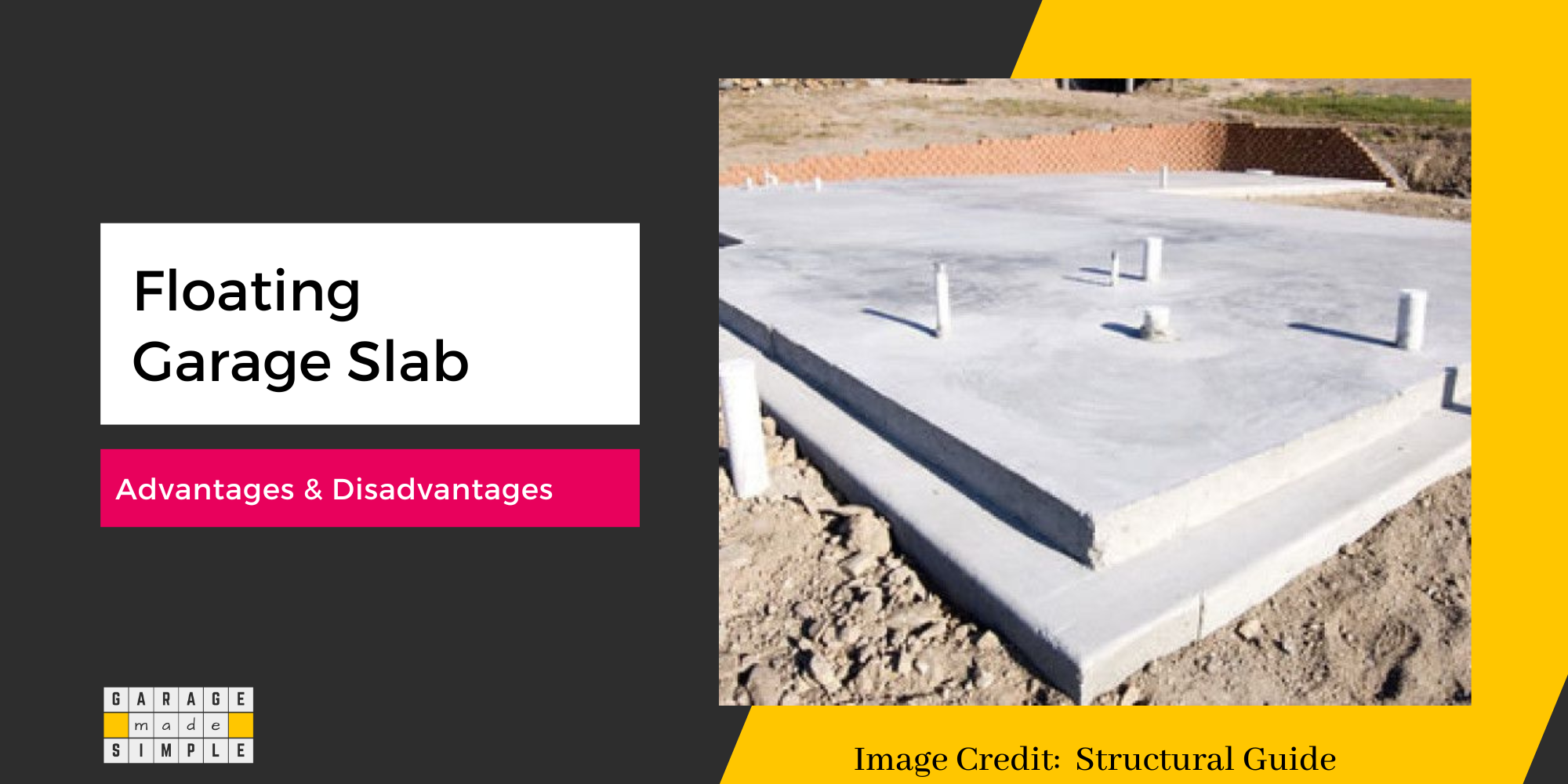Garage Steps into the House Are Mandatory? Truth or Myth?
garagemadesimple.com is a participant in the Amazon Services LLC Associates Program, an affiliate advertising program designed to provide a means for sites to earn advertising fees by advertising and linking to Amazon.com . The website is also an affiliate of a few other brands.
Key Takeaways: Garage Steps into House
- Garage steps into house are not mandated by the 2018 IRC.
- The garage floor does not have to be lower than the house floor but must slope towards a drain or the garage door to divert water away from the house.
- Garage entry doors between the garage and the house must be fire-rated, self-closing, and solid wood or steel.
- Common myths about gas leaks, carbon monoxide, and flooding often influence the decision to have lower garage floors.
- Wheelchair access and convenience are important reasons to keep the garage floor at the same level as the house.
Must You Have Garage Steps Into House?
If you are in the process of planning to build your house with an attached garage, the level of the garage floor may be an irksome issue. Can the garage floor be at the same level as that of the main house? Does it have to be lower and in which case are garage steps into house required?
Garage steps into the house are not mandated by the 2018 International Residential Code (IRC). The current code does not require the garage floor to be lower than that of the house. It is completely up to you.
As per IRC code, a garage floor should slope towards a drain or the garage door. Compliance to this code ensures that water flooding or gas leaks will be diverted away from the house anyway.

Keeping the garage floor level below that of the house is an old practice which refuses to die. The decision to have the garage flower lower than that of the main house should be dictated only by your own personal preferences & needs, subject to approval from the local building authority.
Compliance with Local Building Code
The only caveat is that, sometimes, the local building code may have a requirement that goes beyond the requirement stated in the International Residential Code. So, please check with your local building authority and act accordingly.
Any residential construction requires a permit to build from the local authorities. You should never construct or build anything that is not approved in the permit. It could land you in some serious trouble at the time of inspection.
In this post I will explain the different sections in the 2018 International Residential Code (IRC) that apply to garage floors, garage entry doors, etc. I will then explain the pros & cons of having or not having garage steps to the house.
I will refer to Chapter 3 Building Planning of The 2018 International Residential Code (IRC) “Fourth Version September 2020”, the latest update made available on the internet.
Does a Garage Floor Need a Slope?
A garage floor needs to have a slope to comply with Section R309.1 of the 2018 International Residential Code (IRC). The exact wordings are:
Garage floor surfaces shall be of approved noncombustible material. The area of floor used for parking of automobiles or other vehicles shall be sloped to facilitate the movement of liquids to a drain or toward the main vehicle entry doorway.
The folks at IRC have given a lot of thought in incorporating Section R309.1 in the Code. Safety is their prime concern. The giveaway are “noncombustible material” and “liquids”, not water, used in the wording.
Your garage is primarily designed to park automobiles. Leaks and spills of “combustible liquids” such as gasoline and motor oil are a distinct possibility. A garage floor that slopes towards the garage door or drain will carry the inflammable liquids away from your house.
In essence the garage slab slope prescribed in the code is the safety feature and it is not necessary to keep the garage flower at a lower level.
Section R309 deals with “Garages and Carports” and has 4 subsections. None of them have any stipulation on the garage floor level in relation to the house floor level.
What Is the Building Code for a Garage Entry Door to the House?
Another safety feature that the 2018 International Residential Code (IRC) has incorporated are the sections pertaining to the “opening between the garage and the house”. The section on the Garage Entry Door is worth noting.
The Garage Entry Door between the garage and the house must comply with Section R302.5.1 of the 2018 edition of the International Residential Code (IRC). The exact wordings are:
R302.5.1 Opening protection: Openings from a private garage directly into a room used for sleeping shall not be permitted. Other openings between the garage and the residence shall be equipped with solid wood doors not less than 1-3/8 inches (35 mm) in thickness, solid or honey-comb core steel doors not less than 1-3/8 inches (35 mm) thick, or 20 minute fire-rated doors equipped with a self-closing or automatic-closing device.
The important safety points to note here are:
- The door must be fire-rated
- The door must be self closing
From a safety point of view, once Section R302.5.1 of IRC is complied with, it really does not matter whether the garage floor level is below the house floor level or not.
Section R302 of the IRC deals with Fire Resistant Construction. Section R302.5 deals specifically with Dwelling-garage opening and penetration protection. There are 3 sub-sections under this but they do not concern the garage floor level.
Why Are Garage Floors Lower Than the House? Busting a Few Myths!
The belief that the garage floor should be lower than the house floor and garage steps should lead up to the house is based on the old building codes. The old code required that the floor of an attached garage must be four inches lower than the floor level of the house.
Many contractors insist on following this practice, even though the code no longer requires the attached garage floor to be lower than the house floor. Maybe, it made sense then. Now it has to do more with lack of information and the perpetuation of myths!
Let us look at some of those myths:
Myth #1: Gas Leak
The Myth: What if the gas tank of your car had a leak and you were not aware of it. The gas would leak onto the garage floor and get into the house through the garage entry door if there were no steps.
The garage floor should slope towards a drain or the garage door as per IRC Section R309.1. The gas from the leak will flow towards the drain or the driveway, not towards the house.
A full tank of gas in a standard car is 15 gallons (3 buckets of 5 gallons). This is equivalent to 2.40 cubic feet. A standard 1 car garage has a floor area of 480 square feet (20’X24′). So even if the 15 gallon of leaked gas could not drain out, it would pool up to a height of just around 1/16th of an inch on the garage floor.
Remember the garage entry door should be self closing as per IRC Section R302.5.1. Do you think garage steps leading to the house are necessary to prevent leaked gas from entering the house?
Myth #2: Carbon Monoxide
The Myth: What if I left my car idling and the deadly carbon monoxide gas crept into my house through the garage entry door if there were no steps?
Carbon Monoxide is a “killer” gas which is part of the exhaust emissions from a car.
Carbon monoxide (CO) is a poisonous, colorless, odorless and tasteless gas. Although it has no detectable odor, CO is often mixed with other gasses that do have an odor. So, you can inhale carbon monoxide right along with gasses that you can smell and not even know that CO is present.
Source: OSHA Fact Sheet
Carbon Monoxide can be fatal as it deprives the heart of oxygen. In a residential setting Carbon Monoxide can cause you to lose consciousness and suffocate while you are asleep.
Carbon Monoxide is heavier than air so it stays close to the garage floor. It could drift into the house through the garage entry door bottom. Keeping the garage floor level lower than the house will certainly help in preventing this from happening.
However, Section R315.2.1 New Construction of the of the 2018 edition of the International Residential Code (IRC) has incorporated the requirement of using carbon monoxide alarms. The exact wordings are:
For new construction, carbon monoxide alarms shall be provided in dwelling units where either or both of the following conditions exist: The dwelling unit contains a fuel-fired appliance or the dwelling unit has an attached garage with an opening that communicates with the dwelling unit.
The right amount of air circulation is important for safety, physical health and mental well-being.
It is so important that there is an ANSI/ASHRAE Standard 62.2-2019 which describes the minimum requirements to achieve acceptable Indoor Air Quality (IAQ) via dwelling-unit ventilation, local demand controlled exhaust, and source control.
In an attached garage you can get rid of fumes & toxic gasses by incorporating well placed vents. Please check my earlier blog post Why Have Garage Wall Vents? (7 Important Reasons You Need To Know!).
To summarize
- Having the garage floor level below that of the house will prevent carbon monoxide from creeping in into the house from under the garage entry door. However, this is not required by any international code, to the best of my knowledge. Please double check with the local building code authorities.
- Irrespective of the garage floor level you must install a carbon monoxide alarm to comply with IRC Section 315.2.1
- Irrespective of the garage floor level you must ensure minimum acceptable IAQ to comply with ANSI/ASHRAE Standard 62.2-2019
Myth #3: Flooding
The Myth: What if my garage got flooded and the water entered my house through the garage entry door if there were no steps to contain the water within the garage?
The garage floor should slope towards a drain or the garage door as per IRC Section R309.1. The drain system should have the drainage capacity to clear any flooding in the garage. In most cases the drain system will be able to handle water from snow melt, car wash and plumbing leaks.
If you expect torrential rains and heavy flooding in your area then you have to think of more innovative water diversion provisions. Keeping the garage floor lower than the house is a partial solution at best. Not a great solution too as stuff in your garage will get damaged by the flood water.
When is a Garage at the Same Level as a House Better?
There are a few occasions when you wish your garage floor was at the same height as the main house.
Wheelchair Access: This tops my list. If you or a member of your family requires a wheelchair for mobility, then I do not require to explain why it is so important to have the garage at the same level as the house.
Grocery Shopping: One of the benefits of having an attached garage is that it is convenient. But I doubt you like the idea of climbing a few garage steps to get into the house while you are struggling with several bags of groceries. Possibly with a kid or two in tow!
To be fair, you could build a ramp. But ramps can get slippery when wet.
Should the Garage Floor be Lower than the House Floor?
To summarize the above post:
- 2021International Residential Code does not mandate it
- Most Local Building Codes follow the IRC. But some may not. You need to check.
- Garage floor must be sloped as per IRC Section R309.1
- Garage Entry Door must be self closing as per IRC Section R302.5.1
- A Carbon Monoxide Monitor must be installed as per IRC Section 315.2.1
- Minimum Acceptable IAQ must be ensured as per ANSI/ASHRAE Standard 62.2-2019
- Prevent garage and house flooding by building appropriate drain system
You should decide on the level of your garage floor in relation to the level of the house floor as per your preference & need, subject to approval from the local building authority.
Thank you very much for reading the post. I do hope you found it informative and useful.






